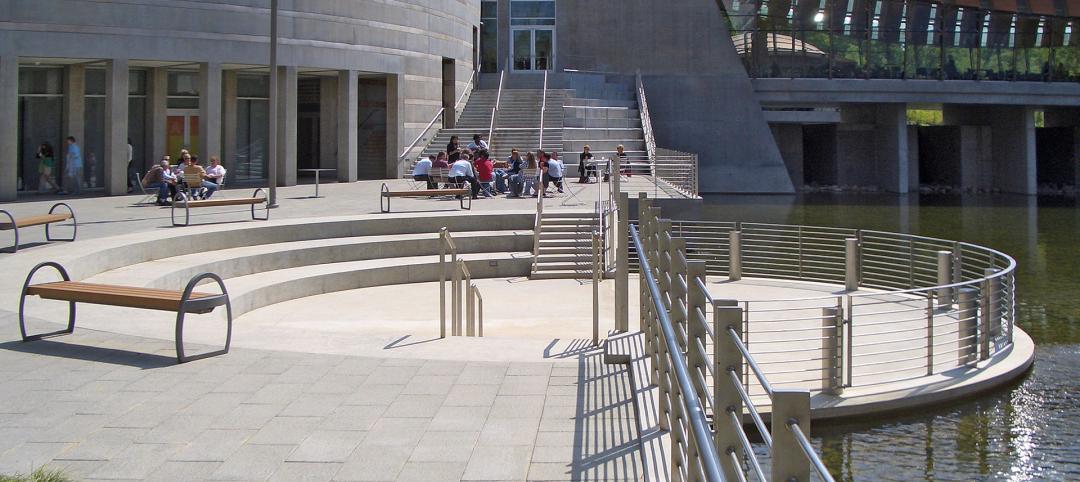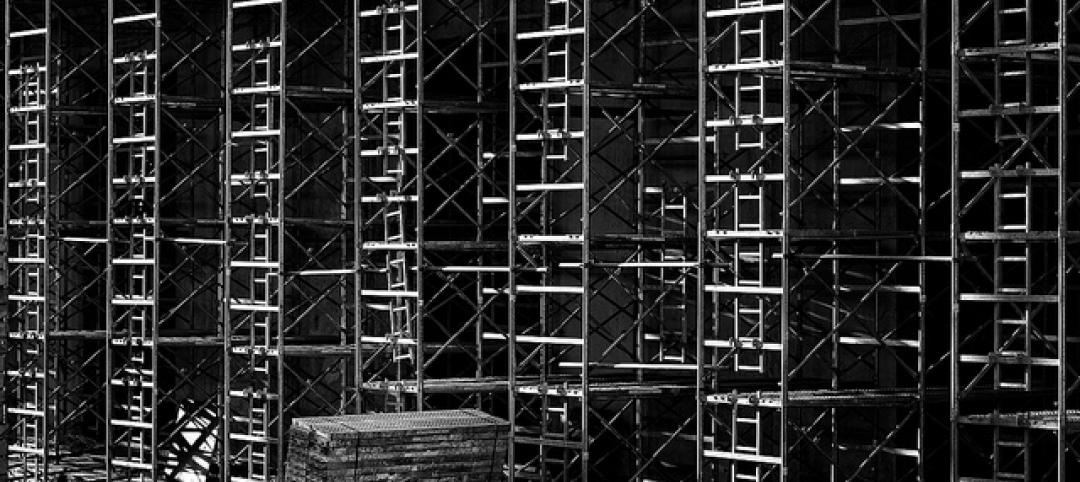Gensler recently published its 2014 Design Forecast, which covers the trends the company believes will dominate design over the next decade.
In all, 44 trends are covered in the report, as are six “meta-trends” that define Gensler’s overall outlook on the future of design. The report divides design into 22 focus areas.
The meta-trends cover the workplace, wellness, technology, urbanization, globalization, and development. In a nutshell: cities are becoming the vortex of massive growth, urbanity will become more intertwined with mixed-use buildings, and technology will influence how people experience places where they live, work, and relax.
Design will be expected to make wellness a part of everyday living, and workplaces will begin to address the problems of mobility and collaboration. Finally, companies in Latin America, Asia, and the Middle East will likely expand into new markets.
Here are some of the 44 trends we found interesting. For the full report, you can click here.
Workplace
2. Toward a next-gen workplace
As a new cohort—bigger than the Boomers—gets to work, the office workspace will be reshaped. The line between work and city will blur as towers and campuses mix in “community.” Coworking space, with its informal and collaborative ethos, will scale up. “Smart” environments will take hold. Attracting this young and creative generation will be a shared goal of cities and employers.
Commercial Office Developers
4. A building type in flux
Emerging tenant demands challenge conventional approaches to vertical transportation, egress, floor-to-floor heights, and occupancy metrics. Higher densities, greater utilization, and 24/7 use mean more robust infrastructure for new buildings. Low-voltage current and the cloud simplify it for some users, making older buildings easier to convert to meet the needs of office tenants.
Corporate Campuses
7. Shifting views on headquarters
Silicon Valley continues to favor suburban campuses, even though the tech workforce lives urban. Yet other companies are following the broader trend of locating close in, often in areas overlooked by financial companies and professional services firms. Energy companies also favor the suburbs, but a few of them are opting for several locations that face their global markets.
Media
14. The media industry’s growing impact
Media now includes all forms of interpersonal communications, entertainment, and interactive technologies. It comprises both conveying information and sharing it. The emerging media industry reflects how content and delivery are fused together. It is changing the competitive landscape and challenging other industries’ business models and use of physical space.
Entertainment
19. Total immersion steals the show
People are seeking immersive environments that take them to new places. Large-scale theme parks and themed attractions are appearing in the Gulf, China, and Turkey. Casinos take on spectacular new forms or recall exotic locations. Even cinemas offer high-end experiences. While technology is part of it, the settings and sensory engagement are the main events.
Retail Centers
21. The imperative to connect
Retail centers are pulling out the stops to connect with shoppers, both by curating the mix to reflect local tastes and by layering in activities—a full calendar of farmers’ markets, concerts, craft and maker fairs—and amenities that their target markets will appreciate. The aim is to increase the touch points with shoppers so a center is on their map and worth return visits.
22. The city as mall, the mall as city
Urbanization is shifting retail centers to the urban core as retailers focus on dense,transit-served districts. In established urban markets with a lot of infill sites, retail centers are shrinking. They’re also engaging the street rather than turning their backs on it. In other markets, the scale is much bigger, but the feeling is urban and walkable, activated by density and events.
Retail
24. Brick-and-mortar stores will persist
Although their overall contribution to retailer revenues is declining, stores will persist because they offer brick-and-mortar retailers a way to differentiate themselves from online shopping. To shrink stores and decouple inventory and delivery from the hands-on, tech-augmented experience of stores, sales staff, and goods, retailers will need to integrate and orchestrate their different retail channels.
Tall Buildings
25. Tall buildings are mixed use
To minimize investment risk and activate the larger setting, the trend in tall buildings is to mix headquarters-quality office floors with hotel, residential, retail, cultural, and community spaces. Separate access is important—and VIP access is crucial in China. The retail podium, sky gardens, shared-amenity floors, and public club/observation spaces all support round-the-clock vertical living.
Mixed Use
28. Everything comes in combination
The necessity of mixed use is such that even specialists in single-use development look for ways to introduce it in their own projects or capitalize on it in the adjoining district. The value it brings, even in suburban towns, has as much to do with social connectivity as destination value. Transit is often in the mix, but the mix is richer, denser, finer-grained, and more dynamic and unpredictable.
Planning & Urban Design
35. The rise and rise of the metropolis
Growing urbanization means that metropolitan regions are the engines of the wider economy. They have to balance the demands of the future with the realities of the present, and contend with very different challenges. Planning for a metropolis will mean engaging with it over time, influencing the short term with a longer-term perspective. It will also require a global toolkit.
Aviation & Transportation
43. The passengers reign supreme
People want their airports back. In a post-9/11 world, their desire for more pleasurable air travel will compel airports to cater to passengers’ varied needs and wants. New levels of comfort and calm will elevate the total experience. Airports will look beyond aviation, finding inspiration in hospitality, entertainment, retail, and brand design to meet passengers’ raised expectations.
44. Urbanization boosts connectivity
As rising urbanization increases density, regions will push for greater connectivity. Airports will be the global portals of metropolitan and intercity transit systems, including high-speed rail. Airports will be destinations and urban centers in their own right, spurring a host of new uses that can leverage their strategic importance as a converging point—the long-forecast airport city.
Related Stories
| Dec 11, 2014
Moshe Safdie awarded 2015 AIA Gold Medal
The AIA Gold Medal, voted on annually, honors an individual whose significant body of work has had a lasting influence on the theory and practice of architecture.
| Dec 10, 2014
International Olympic Committee releases first images of new HQ in Switzerland
Designed by 3XN, the new headquarters is located within a park on the shores of Lake Geneva and adjacent to historic Château de Vidy, which has been the iconic home of the IOC.
| Dec 10, 2014
CannonDesign acquires Astorino, forms design-led design-build division
The merger also extends CannonDesign’s presence in the markets Astorino currently serves, namely Pittsburgh and Abu Dhabi.
| Dec 10, 2014
Must see: Babina's latest illustrations cast famous architecture quotes as colorful road signs
Babina has adapted quotes from famous names such as Frank Lloyd Wright, Alvar Aalto, and Mies Van Der Rohe.
| Dec 9, 2014
Steven Holl wins Mumbai City Museum competition with 'solar water' scheme
Steven Holl's design for the new wing features a reflective pool that will generate energy.
| Dec 9, 2014
ABC economist predicts continued construction industry growth in 2015
In his latest report, ABC's Chief Economist Anirban Basu forecasts nonresidential construction spending to expand by roughly 7.5% next year, led by the power, lodging, office, and manufacturing sectors.
| Dec 8, 2014
How brick and mortar enables online retail
According to a shopping preferences study conducted by A.T. Kearney, as many as two-thirds of shoppers go to a physical store before or after making an online purchase, writes Gensler's Jill Nickels.
| Dec 8, 2014
The year’s boldest BIM/VDC themes
High-speed rendering software, custom APIs, virtual reality tools, and BIM workflow tips were among the hottest BIM/VDC topics in 2014.
| Dec 8, 2014
AEC firms upbeat about financial results, 2015 looking rosier [exclusive BD+C survey]
The market outlook is brighter for U.S. architecture, engineering, and construction companies, with a majority of AEC firms reporting higher revenues, strong forecasts, and sound financial health, according to BD+C's annual Market Forecast Survey.
| Dec 8, 2014
The global sanitation crisis leads to 2.5 million deaths every year
When we see the incredible technology being produced by global plumbing manufacturers, it’s hard to conceive why no viable technical solution to the global sanitation issue has come forth, writes BD+C's Robert Cassidy.

















